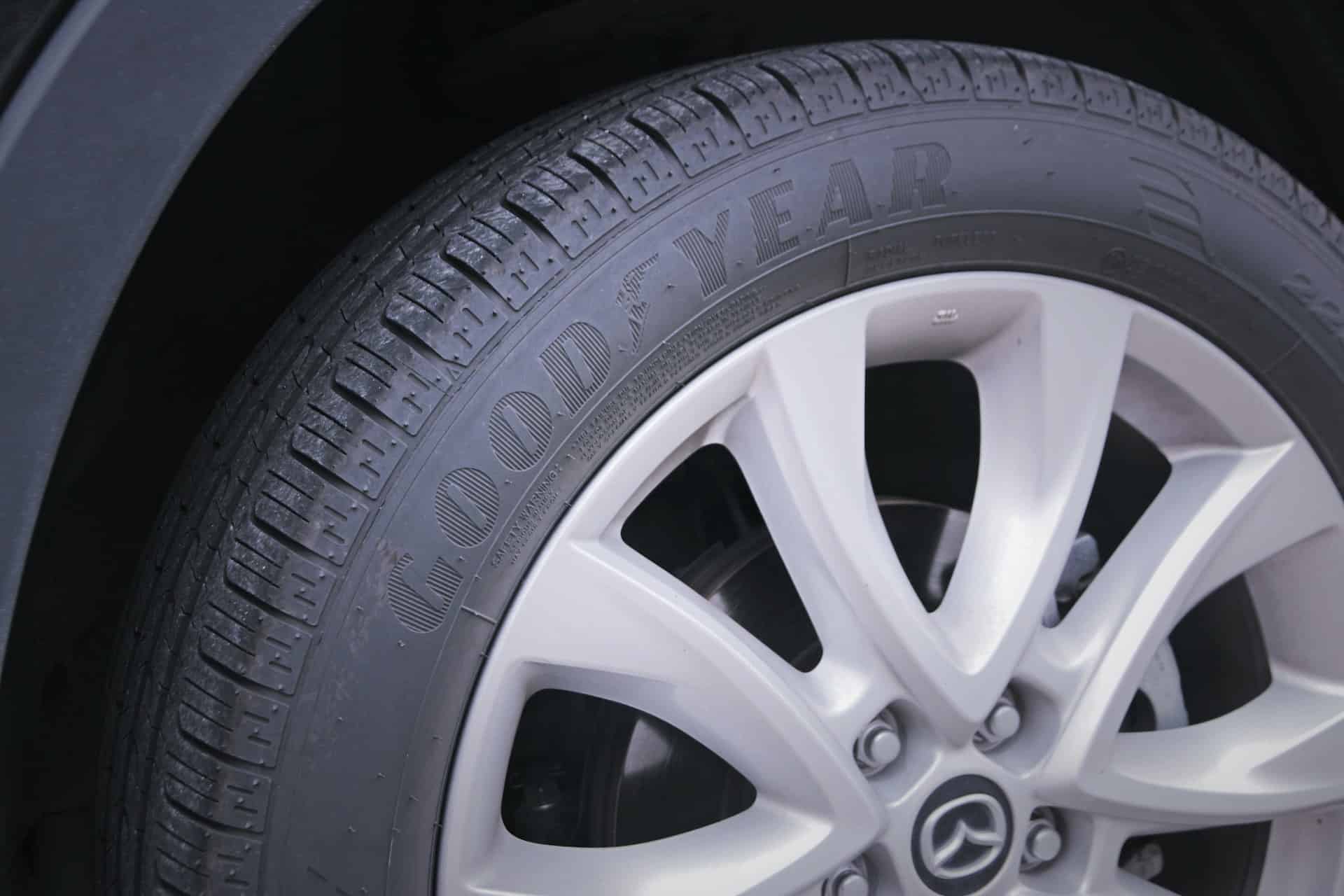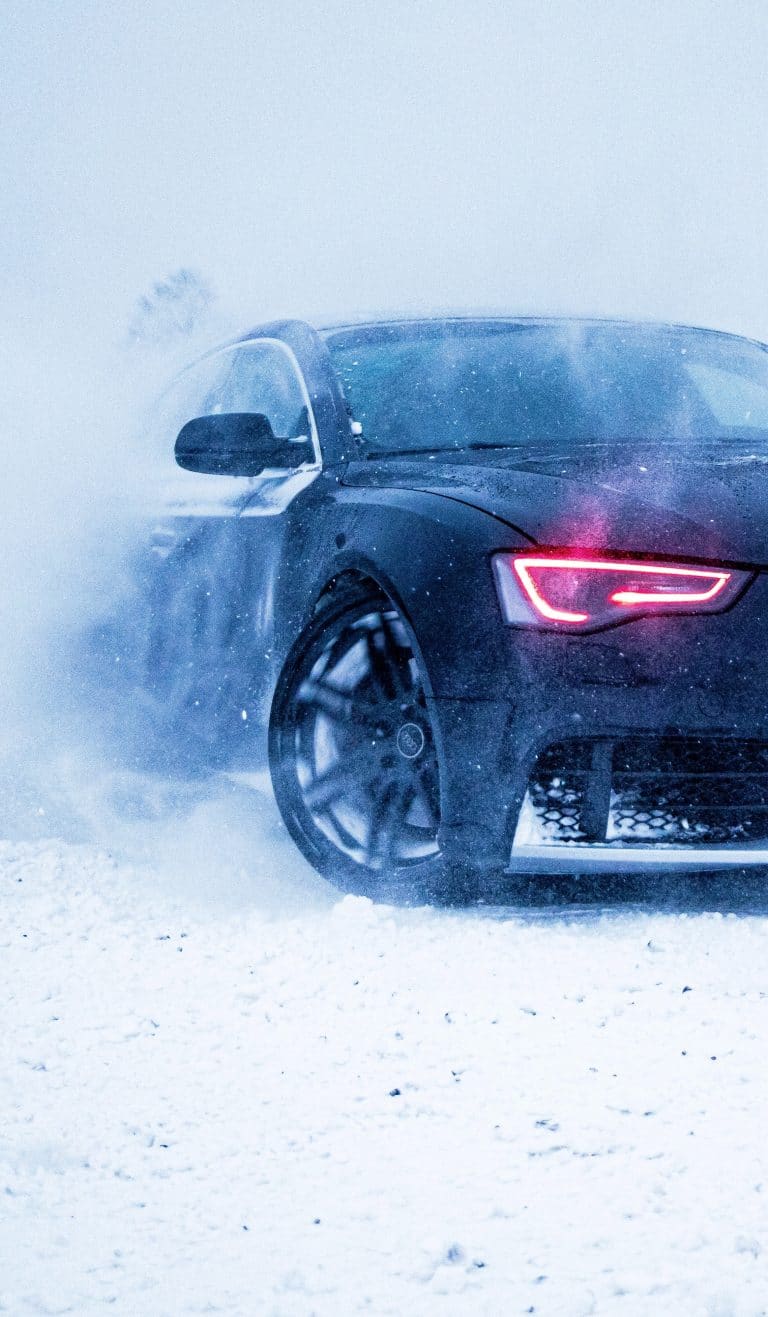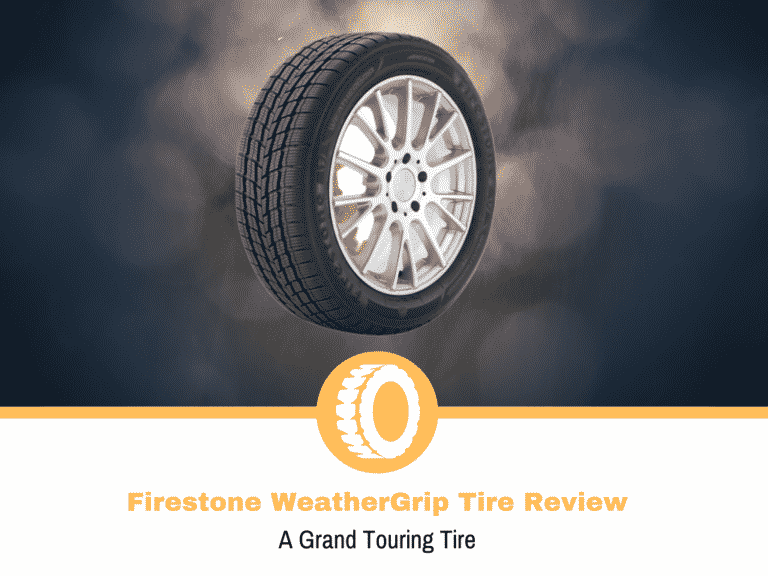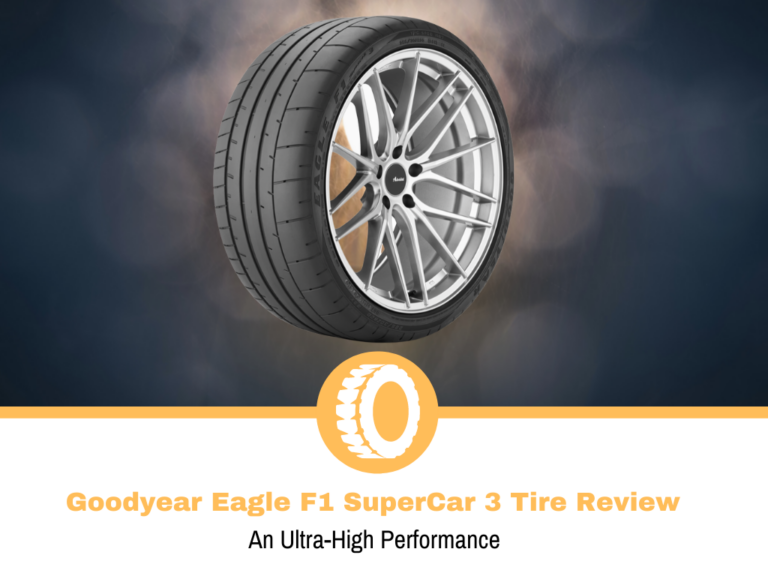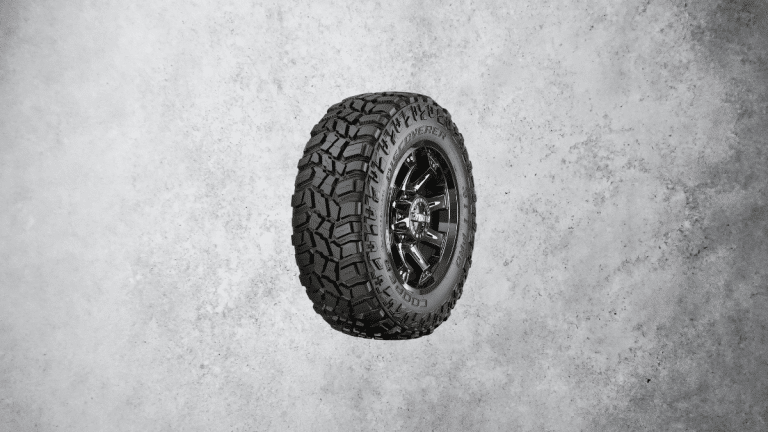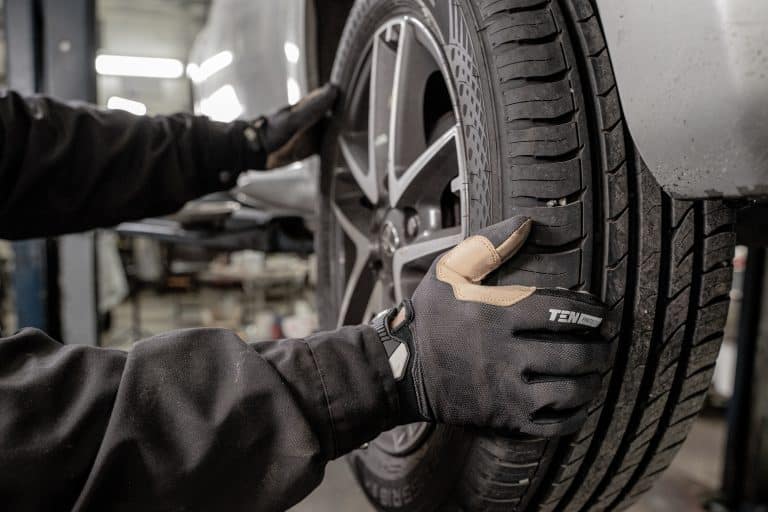The Best Goodyear Tires on the Market Today (2023)
In the world of tires, there are brands that have been around for well over a century. Within that time, many companies were founded, some of which are still operational today. One such company is a domestic one – Goodyear.
The manufacturer was founded in 1898 in Akron, Ohio and one thing that makes it stand out from the crowd is how it got its name. Unlike some of its rivals that got their names from the founders, Goodyear was named after Charles Goodyear, the man that invented vulcanized rubber.
Initially, the company’s profile included making bicycle tires, something that changed shortly after, and the company expanded into the automotive branch. Considering the company’s success in the early years, it quickly gained the attention of Ford, and it began supplying the car manufacturer with racing tires in the early 20th century.
Throughout its history, Goodyear evolved and introduced plenty of innovations, and the most commonly mentioned one is the radial tire design. At that time, the rest of the companies were still working on the outdated bias-ply tires. This and many other examples have enabled the company to grow, and unlike most of its rivals, it remained independent.
One of the main things Goodyear has done well in its past is motorsports. Among the many popular series, you have this brand competing in WEC, Formula 1, NASCAR, and several others.
Like most of its rivals that are into motorsports, some of the technology goes into the road-going tires. The result of this is models considered among the best in the industry, which brings me to today’s topic.
In this list, I’ll outline the best tires Goodyear, offers. Naturally, the latest models are the best, so you shouldn’t expect a lot of outdated options on this list. Also, you should keep in mind that these aren’t tires that are the best in the industry, so some drawbacks are to be expected.
#1. Eagle F1 Asymmetric 6
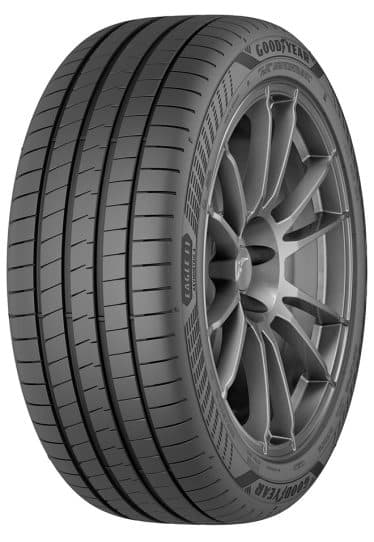
Price Check
Check the price of this tire at the following retailers:
Amazon TireRack DiscountTire Goodyear PriorityTire SimpleTireDon't know the correct size tire to purchase? Start here!
Starting off with the fun options, we have the Eagle F1 Asymmetric 6, a summer performance-oriented tire, which is the freshest option Goodyear has in store.
Dry performance is what the Eagle F1 Asymmetric 6 is all about, and it does that to the best of its abilities. For daily driving scenarios, the tire can deliver far more than you ever need. Even with more powerful cars, the tire will have no issues sticking to the road and providing high levels of grip and traction. The braking distances are also improved, putting the tire at the top of its class
In more aggressive scenarios, you’re also looking at a very capable performer. The Eagle F1 Asymmetric 6 is one of the nicest balanced tires, so not only do you get a tire that won’t slip, you’re getting one that handles excellently. It’s a nimble tire with a good amount of weight without sacrificing responsiveness or feedback, making it an excellent choice for a twisty road or on a track.
In wet conditions, the Eagle F1 Asymmetric 6 is a tire that delivers a bit of mixed results. The tire’s grip and traction levels are excellent for normal use, and it still remains a tire that’s easy to drive. On the other hand, it’s not the most consistent for more aggressive situations and seems to fade sooner than its competitors. Another slight downside is the aquaplaning resistance and the braking distances. In both cases, you are looking at average performance when compared with rivals from the same category. Don’t get me wrong, they are still safe, but not the best.
Despite being a performance-oriented model, the Eagle F1 Asymmetric 6 isn’t a tire with the worst refinement in the industry. The comfort levels are not like most touring tires, and you should expect a harsher ride. It will deal with some of the bumps decently, but that’s as much as you should expect. Noise levels, on the other hand, are pretty good. There are some improvements over its predecessor, so you’ll be getting a toned-down tire. You will hear a hum, but it won’t be the most intrusive one.
Pros
- Superior dry performance
- Handling is very dynamic
- Noise levels are good
Cons
- Aquaplaning resistance and braking distances in wet conditions aren’t the best
- Comfort levels are average
#2. Eagle F1 Asymmetric 3 SUV
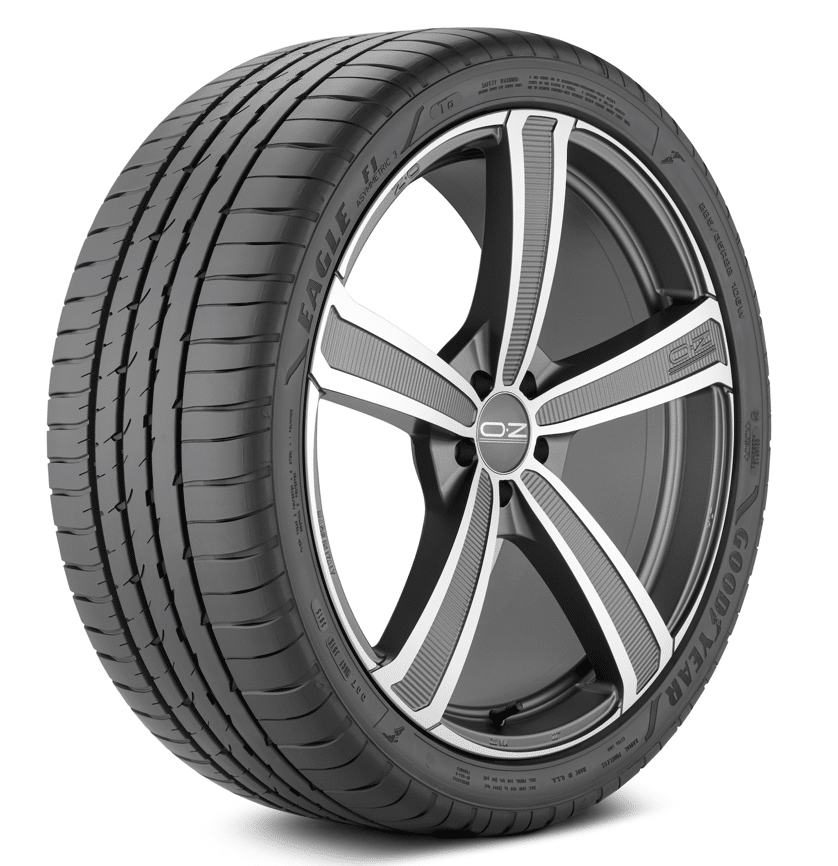
Price Check
Check the price of this tire at the following retailers:
Amazon TireRack DiscountTire Goodyear PriorityTire SimpleTireDon't know the correct size tire to purchase? Start here!
Performance-oriented tires aren’t only reserved for passenger cars, and you can find them for CUVs and SUVs. One such model from Goodyear is the Eagle F1 Asymmetric 3 SUV.
In this segment, the tire does pretty well in dry conditions, which is to be expected from a premium manufacturer. In everyday scenarios, the Eagle F1 Asymmetric 3 SUV is a tire that won’t let you down with the performance it can offer. Like its passenger car cousin, the tire will be more than up for the task, thanks to the high levels of grip and traction. The braking distances are also very short, even though they aren’t the shortest in this class.
Since we’re talking about performance options, the Eagle F1 Asymmetric 3 SUV is a model that can deliver in those conditions as well. The tire handles marvelously and will remain planted even in the most aggressive situations. In this regard, I would put it on the same level as the Pilot Sport 4 SUV or maybe a bit better, but not by much.
The Eagle F1 Asymmetric 3 SUV reminds me a lot of the previous tire in regards to the performance it has in wet conditions. There are high levels of grip and traction, and combined with the tire’s handling, makes this an excellent choice for damp conditions. This also includes the braking distances, which like in dry conditions, are very short, but just a tad behind the best in this class. One thing that disappoints a bit is the aquaplaning resistance. The tire doesn’t do so bad, but it’s not very near the top like in other testing metrics.
Even in the refinement department, the Eagle F1 Asymmetric 3 SUV is similar to the Eagle F1 Asymmetric 6. The tire’s noise levels are decently low, and you won’t have a hard time with it. There’s not a lot of noise at slow speeds, and on the highway, it’s not the worst in the category. Comfort levels are not the best, but if you’re going for a size with a higher profile, you may get around that. For these scenarios, the tire will absorb some of the road imperfections and will soften up larger blows.
Pros
- Plenty of grip and traction in dry conditions
- Planted and stable on damp roads
- Acceptable noise levels
Cons
- Braking distances aren’t the shortest in its class
- Aquaplaning resistance needs a bit more work
#3. Eagle Exhilarate
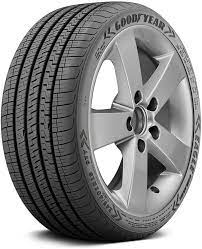
Price Check
Check the price of this tire at the following retailers:
Amazon TireRack DiscountTire Goodyear PriorityTire SimpleTireDon't know the correct size tire to purchase? Start here!
If summer tires aren’t what you’re looking for, then Goodyear has a performance all-season option as well. The Eagle Exhilarate is a relatively new option on the market, which seems to do some things as it should while making a mess of other aspects.
Dry performance is a bit of a mixed bag, but it’s overall a positive experience. The Eagle Exhilarate does an excellent job at delivering performance in normal conditions. You’re getting high levels of grip and traction, which will be plentiful for daily driving, so you won’t be having any issues. Things change in the more aggressive scenarios.
When you start to push it, the tire’s performance remains. The Eagle Exhilarate will continue to stick to the road easily and is among the best handling options in this category. It’s very responsive and delivers plenty of feedback, so you won’t feel like it’s lacking in this department. On the other hand, the tire is lacking in the braking department. Even though the distances are short and safe, they aren’t the shortest, and even tires like the Zeon RS3-G1 are better at it.
Things remain more or less the same even in wet conditions. Naturally, the Eagle Exhilarate won’t be as sticky, but the way it delivers its performance is similar to the dry conditions. The tire’s ability to stick to damp roads is excellent, thanks to the high levels of grip and traction. It’s also a model that has no issues with handling and remains easy to control when you approach the limits. The aquaplaning resistance is also excellent, and you won’t notice any twitching when you drive in heavy rain at higher speeds. As for the braking distances, despite being very short, a few models in this category can outperform it slightly.
The weakest aspect of the Eagle Exhilarate is its performance in snowy conditions. Even though all-season tires aren’t capable of delivering high levels of grip and traction in winter, they are usable. In this case, you’re getting average results in light snow conditions, and if you get a bit aggressive, the tire will struggle a bit more. Things remain more or less the same over packed snow, and you should expect some slipping in certain conditions. The braking distances also aren’t something to write home about. They are noticeably longer than what the Pilot Sport All-Season 4 can offer.
Even though we’re talking about a performance tire, the Eagle Exhilarate does pretty good in terms of refinement. The ride quality is soft for a UHP tire, and it can absorb bumps pretty well while also minimizing the amount of vibrations transferred into the cabin. With larger potholes, you will notice a jolt, but it will be dampened. The noise levels are also pretty good for a tire of this category. Around town, there’s very little noise coming from the tire, which increases at highway speeds, but still remains on the lower side. On rougher roads, there is some noticeable roar which is the most you’ll hear from this tire.
Despite being a performance-oriented model, the Eagle Exhilarate comes with a treadwear warranty. The 45,000 miles that Goodyear offers is pretty decent for a model from its class, falling a bit short of the ExtremeContact DWS06.
Pros
- Excellent aquaplaning resistance
- High levels of grip and traction in dry and wet conditions
- Responsive with plenty of feedback
Cons
- Poor snow performance
- Braking distances fall a bit behind the best in class
#4. Assurance Lineup
Price Check
Check the price of this tire at the following retailers:
Amazon TireRack DiscountTire Goodyear PriorityTire SimpleTireDon't know the correct size tire to purchase? Start here!
This section will be slightly different than the ones I mentioned so far, and I won’t be covering a specific model in the way that I usually do. The main reason is that Goodyear has a unique way of going about in terms of its touring tires, so it’s a bit difficult to name one as the best.
I’ve talked about this in the past, and one thing I don’t like about this model is that it prioritizes a single aspect of a tire. Yes, a single tire cannot be good at multiple things a once, but we’ve seen some excellent all-rounders in the touring segment, so I’m not being overly picky about it.
Unlike most of its rivals, Goodyear focuses on one model around a signal aspect and covers that one aspect making it the best it can be.
As a good starting point in this lineup is the Assurance All-Season model. Goodyear made it like a baseline, covering a wide range of needs and delivering good performance for most people. The tire’s performance is good enough for most people. It does pretty well in dry conditions, and the handling is surprisingly good for a touring tire.
Wet performance is the tire’s weakest point, and even though it’s not horrible in any way, its rivals do a better job at it. It’s the same in snowy conditions, as the tire is considered usable but still falls behind some of its rivals.
In terms of refinement, it’s a decent performer and does a better job at it than the mid-range models but falls a bit behind the premium ones. You can say the same for warranty – the Assurance All-Season comes with a 65,000-mile treadwear warranty, which isn’t the longest one in the premium segment.
What if you’re looking for better gas mileage or longer range on your EV? Then you have the Assurance Fuel Max and Assurance CS Fuel Max. The first one covers the passenger segment, while the second one is for CUVs and SUVs.
Unlike the regular Assurance All-Season model, these two offer better overall performance. For normal driving conditions, the tires offer plenty of performance that will satisfy the needs of most drivers. Considering that they aren’t performance-oriented, you won’t be pushing it, so some of the disadvantages won’t be noticed.
In both cases, you’re looking at very good dry performance from tires that are easy to handle and designed for lower rolling resistance. Wet performance falls a bit behind some of the premium rivals in those categories, but they’re still better than most mid-range options.
Snow performance is surprisingly good in both cases. The Assurance Fuel Max and CS Fuel Max can deliver plenty of traction in light snow conditions and won’t struggle as much over packed snow.
So far, the tires are similar, but in terms of refinement, there are some differences. While the noise levels are not too far off, the passenger model has a slightly harsher ride than the one for CUVs and SUVs.
Things go back to being the same in longevity, as both tires come with a 65,000-mile treadwear warranty.
Goodyear has a few options in the grand touring segment, and since we’re talking about the best, I’ve chosen the Assurance ComfortDrive and WeatherReady. You can probably guess from the names that with these two, we’re talking about a model designed for comfort and the other one is for performance throughout the weather range. The problem with these two is that they’re good at certain things, but they’re far from the perfect Goodyear tires.
The Assurance ComfortDrive model is a true touring tire, capable of covering the needs of most drivers. You’ll be getting plenty of performance in dry conditions, leaving you with plenty of headroom for pushing it. The problem is that the handling isn’t the best in the category. Sometimes it feels a bit detached and doesn’t give you much confidence to push it.
One area where it excels is wet performance, having no issues on damp roads or with heavy rain. The same can be said about winter performance, which isn’t on the same level as a proper winter tire but is usable. You can use the Assurance ComfortDrive in lighter conditions if the snow is shallow and unpacked, but it will struggle on ice and deep snow.
One thing the Assurance ComfortDrive does best is refinement. It’s very comfortable over bumps without feeling bouncy. It’s also a fairly quiet tire, which doesn’t get too loud even on rougher roads.
On the other hand, the Assurance WeatherReady is the opposite of what the ComfortDrive does. In a direct comparison, the dry performance is just a tad behind, but still an excellent performer. The biggest difference is the way it handles. It’s still a touring tire, but it’s responsive and will provide you with a decent amount of feedback.
Wet performance is good for daily driving, but you’ll notice that it’s a bit behind the ComfortDrive. The WeatherReady is still good and has high levels of traction, eliminating slip. On the other hand, the grip levels in the corners doesn’t feel as planted as I’d wanted it to be. Snow performance, on the other hand, is a bit better, so you may find it just a tad more usable in lighter snow conditions.
Refinement is an area where the WeatherDrive doesn’t do as well as ComfortDrive. It’s still a touring tire and will be comfortable and quiet, but it does fall a bit behind its “refined” brother.
One thing both tires do the same is the warranty. In both cases, you’re looking at a 60,000-mile treadwear warranty, which isn’t the best in the class, but it’s still not terrible.
#5. WinterCommand Ultra
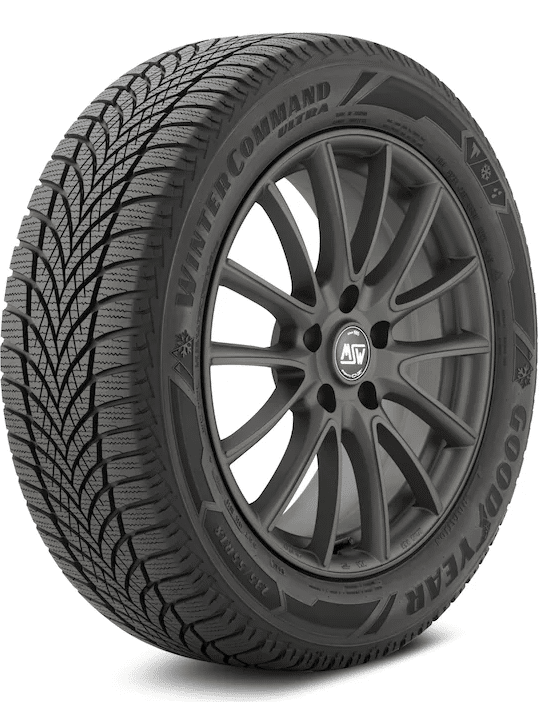
Price Check
Check the price of this tire at the following retailers:
Amazon TireRack DiscountTire Goodyear PriorityTire SimpleTireDon't know the correct size tire to purchase? Start here!
Now I’m going back to the traditional way of talking about tires, and this is a winter option. The models I mentioned so far were either not fit for winter or usable in lighter conditions, but the WinterCommand Ultra is different.
Starting off with the dry performance, the WinterCommand Ultra is a pretty good performer, as long as you don’t expect too much out of it. The grip and traction levels are pretty good for a premium touring tire but slightly behind the best. Most people won’t notice the difference in normal driving situations, so you’ll need to push it to notice it’s lacking just a bit. Even though we’re talking about a winter tire, I expected a bit more. It’s light on its feet, but sometimes it feels a bit detached and lacking a bit of feedback.
In wet conditions, the WinterCommand Ultra will provide you with premium-like performance, which is what you’d expect. The tire delivers high levels of traction on damp roads and won’t struggle in the corners if you throw it harder. Goodyear’s tread pattern does an excellent job at keeping the tire stable at higher speeds in heavy rain situations. One area it’s not the best in class are the braking distances, which trail slightly behind some of the best winter tires on the market.
Winter is what the WinterCommand Ultra is designed for and doesn’t disappoint. The traction levels are on par and, in some cases, better than some of its premium rivals, and the grip levels are also excellent in the corners. One area the tire could use some improvement is the braking distances. They are short for a winter tire but not the shortest in the premium segment. When it comes to ice performance, this is a tire that’s surprisingly good at it. While it won’t match what a studdable tire can do, it’s very good for a studless one.
Refinement is one thing that winter tires aren’t the best, but the WinterCommand Ultra has some drawbacks. Even when compared with some of the rivals, the tire is a bit noisier, which is mainly noticeable at higher speeds. The comfort levels also aren’t something to write home about. Despite being a winter tire designed to be softer, the ride quality is a bit on the firmer side.
Pros
- Excellent ice performance
- Plenty of performance in dry and wet conditions
- Noise levels are good
Cons
- Not the most comfortable winter tire
- Braking distances are a bit behind the leaders in this class
#6. UltraGrip Performance+ SUV
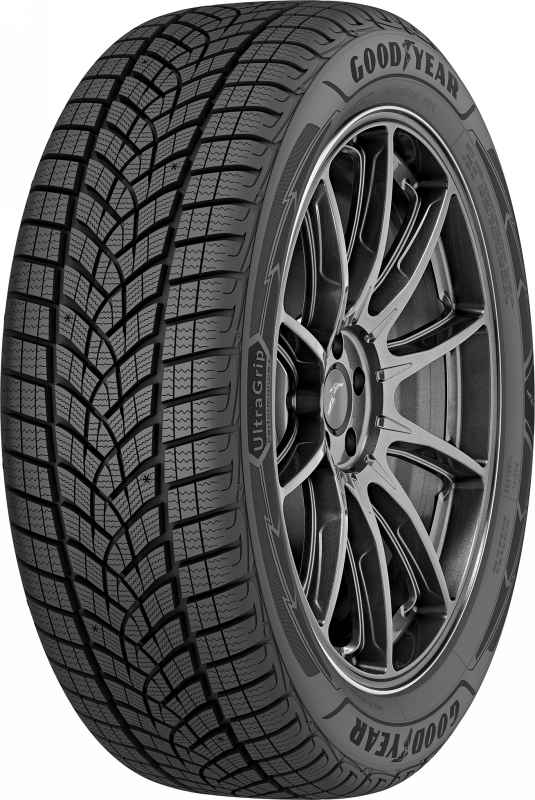
Price Check
Check the price of this tire at the following retailers:
Amazon TireRack DiscountTire Goodyear PriorityTire SimpleTireDon't know the correct size tire to purchase? Start here!
SUV and crossover owners aren’t forgotten, and for them, I have the UltraGrip Performance+ SUV. Even though it won’t be the best in every metric possible, it’s a tire that won’t disappoint with its performance.
In dry conditions, the UltraGrip Performance+ SUV delivers some mixed results, which doesn’t mean that it’s a poor performer. The grip and traction levels are excellent and will keep your vehicle planted with ease. Once you approach the limits, you’ll have a bit of a handful. The handling isn’t on the same level as something like the Blizzak LM005, so it won’t reward you in any way. As long as you need it for normal driving, the tire won’t disappoint. One area the tire excels in is the braking distances, which are among the shortest in this category.
Things seem to improve with the UltraGrip Performance+ SUV in wet conditions, especially when we look at the way it handles. It’s very easy to control when you reach the limit, and it won’t feel too detached, meaning that the feedback is plentiful. The tire also doesn’t disappoint with the grip and traction levels on damp roads and will keep you safe thanks to the short braking distances. When it comes to the aquaplaning resistance, the tire doesn’t do so well. It’s stable at higher speeds and feels planted, but some of its rivals can handle a bit more.
In wintery conditions, the UltraGrip Performance+ SUV is a solid performer, but it does lack when compared with its rivals. The traction of the tire is good and gets rolling without too many problems. It can bite into snow even if it’s packed and won’t slip unless you get really aggressive. The weaker point is the handling, which isn’t terrible in normal driving conditions but feels a bit vague when you approach the limits. Ice is something the tire handles pretty good and is usable. Like its passenger cousin, it’s not comparable to a studded tire, but it can get the job done if you need to.
In terms of refinement, things are similar to the previous tire I mentioned. The UltraGrip Performance+ SUV is a winter tire that manages to keep the noise levels down. It’s not on the same level as the grand touring models, but it’s surprisingly quiet for a winter tire. The comfort levels are decent, but the ride can feel a bit harsh, especially on bad roads.
Pros
- Superb wet handling
- Short braking distances in wet
- Plenty of performance in all conditions
Cons
- Dry performance falls a bit behind some of its rivals
- Ride quality isn’t the softest in its class
#7. Wrangler All-Terrain Adventure with Kevlar
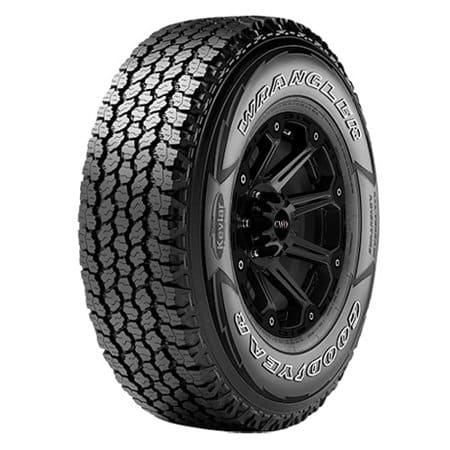
Price Check
Check the price of this tire at the following retailers:
Amazon TireRack DiscountTire Goodyear PriorityTire SimpleTireDon't know the correct size tire to purchase? Start here!
So far, all the tires I mentioned are road-going options, so here’s one for people that want some off-road performance. The Wrangler All-Terrain Adventure with Kevlar has a really long name and is designed to balance on and off-road use.
In dry conditions, the All-Terrain Adventure is a solid choice, considering its tire type. For daily driving scenarios, the tire will be more than up for the task, offering high levels of grip and traction. Pushing isn’t something you’ll be doing too much with this tire, so don’t expect wonders. The handling is also like any off-road tire you can get, not the most responsive and with not a lot of feedback.
In wet conditions, the All-Terrain Adventure will continue to deliver the performance you can ask of it. On damp roads, the traction will be adequate to eliminate slip, and the grip levels will keep your vehicle in check without understeering too much. The braking distances are also very short, and the tire will remain stable even in harsh rain conditions.
As an all-season tire, the All-Terrain Adventure is usable in winter conditions, but there’s a catch. If you’re going for the LT-metric option, you’ll be getting a tire with a 3PMSF rating. As a result, the snow performance will be much better than the P one. For that one, you’re looking at usable performance even in slightly deeper snow, but not comparable to the performance the LT model can offer.
Off-roading is what the All-Terrain Adventure is designed for and does that pretty well. The tire has no problems with dirt roads and will handle lighter mud or sand situations. Since it’s not a mud-terrain tire, situations like rock crawling are doable but don’t expect it to shine.
When we come to the refinement section, we have two sides. The positive side of the All-Terrain Adventure is that it’s a decently comfortable tire. It softens up even the larger potholes without transferring too much of the vibrations in the cabin. On the negative side, we have the noise levels, which, as you’d expect, aren’t the best. Around town, it’s acceptable and won’t roar as much as it will at higher speeds.
The warranty is an area where the All-Terrain Adventure does pretty good. You’ll get it with a 60,000-mile treadwear warranty, which is more than what most of the premium tires come with.
Pros
- Plenty of road performance for daily driving situations
- Comfort levels are very good
- Excellent tire for the casual off-roader, except for the most extreme conditions
Cons
- You can get a 3PMSF rating only with an LT-metric tire
- Not the quietest tire in this class
#8. Wrangler MT/R with Kevlar
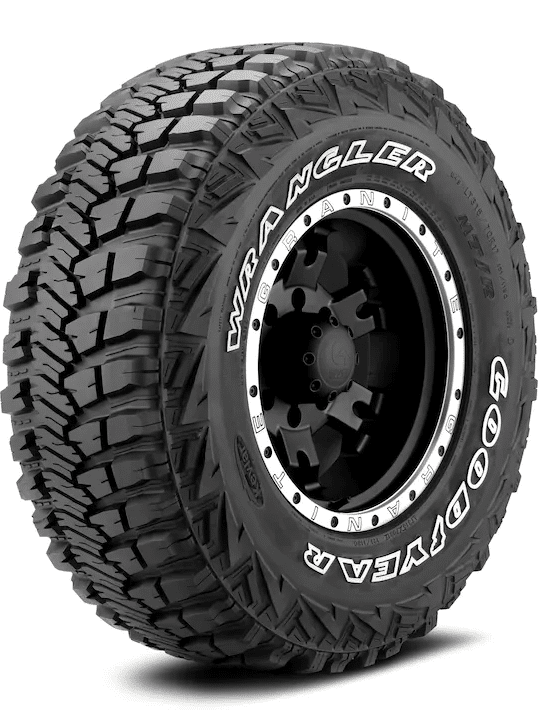
Price Check
Check the price of this tire at the following retailers:
Amazon TireRack DiscountTire Goodyear PriorityTire SimpleTireDon't know the correct size tire to purchase? Start here!
Finally, for the big finale, we have the most hard-core off-road tire Goodyear has on offer – the Wrangler MT/R with Kevlar. Since we’re talking about a mud-terrain tire designed about off-road performance, you are sacrificing the road performance of the previous tire for better performance in extremer situations.
The road performance is mediocre when compared with other types of tires. You won’t be getting a lot of grip and traction to really push it, but it will get you from point A to point B if you’re aware of the tire’s limitations. Handling is another area where the Wrangler MT/R with Kevlar won’t wow any enthusiast. It turns, but it doesn’t provide a lot of feedback.
In wet conditions, the tire seems to do a bit better. The levels of grip and traction aren’t magically higher, but it feels a bit more planted and stable. Again, you won’t be pushing it on a track, but you will have a bit more confidence. You’re also getting some very short braking distances, as well as excellent aquaplaning resistance.
In wintery conditions, the tire seems to do a pretty good job at tackling snow and slush. This is mainly due to the deep tread and pattern, so it can dig in and find some traction. I wouldn’t compare it with a proper winter tire, but it’s not the worst I’ve seen.
Now we come to what the Wrangler MT/R with Kevlar is designed for, and it does that as best as it can. The tire will have no issues with anything from the lighter conditions all the way up to the most extreme ones. on gravel surfaces, the grip and traction levels are excellent, and the tire’s braking distances are among the shortest in class. It’s more or less a similar story on grass surfaces, but you may notice a bit more slip if you get a bit aggressive.
The tread pattern of the Wrangler MT/R with Kevlar is what enables it to deliver its performance in mud, even in deeper situations. On sand, it may struggle a bit more if it’s deep, but it’s not exactly advertised as such, so no problems here. If you’re after some rock crawling, just deflate the tire, and it will go over almost anything you throw at it.
Refinement is something mud-terrain tires aren’t known for, and the same goes for the Wrangler MT/R with Kevlar. Under normal tire pressure, it will feel a bit harsh and bumpy, which can be addressed by airing down a bit. The problem with that is that it softens up the blows but doesn’t make it a particularly comfortable option. Noise levels are also something you shouldn’t expect to be good. On paved surfaces, the roar is quite noticeable, even at lower speeds.
Pros
- One of the best off-road performers in its class
- Acceptable performance on the highway
- Usable in snow
Cons
- Not the most affordable option on the market
- Even in this category, the refinement levels aren’t the best
